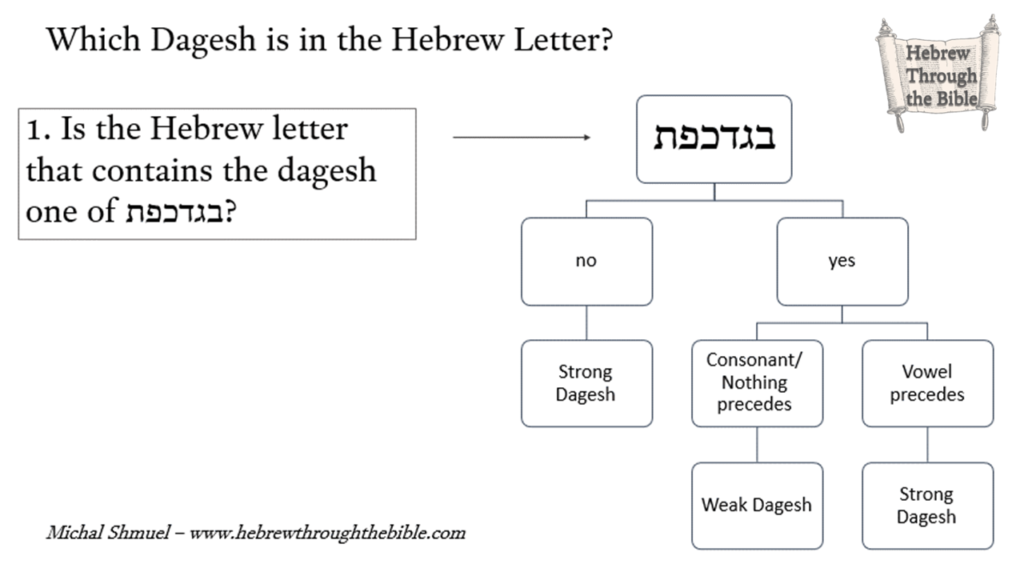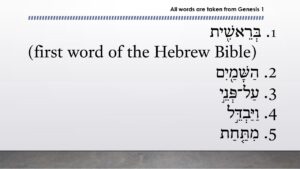With the summary below you can identify whether the Dagesh in any given letter in the image is strong or weak (answers at the end of the post).
Weak Dagesh appears:
- only in begad-kefat consonants (בגדכפת)
- at the beginning of a verse/ in an isolated word, e.g. in a vocabulary word
- (in the middle of a verse) at the beginning of a word that is immediately preceded by a consonant
- at the beginning of a syllable within a word of a consonant immediately precedes
Strong Dagesh appears:
- in all consonants except א, ה, ח, ע, ר
- in a begad-kefat consonants provided that בגדכפת are immediately preceded by a vowel
Flowchart:
- Ask: Is the letter that contains the dagesh one of בגדכפת?
- Follow the arrow to the right and check against the text

Answers:
- Weak Dagesh in ב because nothing precedes, i.e., the word appears at the beginning of the verse and at the beginning of the Bible.
- Strong Dagesh in ש. It is not a בגדכפת and must therefore be strong.
- Weak Dagesh in פ. The letter is one of בגדכפת and appears directly after a word that ends in a consonant.
- Strong Dagesh in י, because it is not one of בגדכפת. Weak Dagesh in ד, because the בגדכפת letter appears at the beginning of a syllable that is preceded by a consonant (the Shewa is silent).
- Strong Dagesh in ת, because the בגדכפת letter is immediately followed by a vowel.

